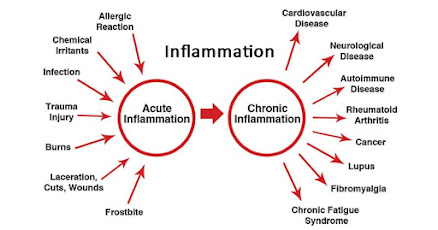Neoplasia Mcqs
Neoplasia Mcqs
In which stage of shock cellular and tissue injury is so severe that even if the hemodynamic defects are corrected, survival is not possible? *
Initial non-progressive stage
Progressive stage
Irreversible stage
All of these
Failure of myocardial pump resulting from intrinsic myocardial damage, extrinsic pressure, or obstruction to outflow will lead towards :
Cardiogenic shock
Septic shock
Hypovolemic shock
Can't be predicted
A 68-year-old man develops sudden, severe substernal chest pain. Laboratory studies and ECG confi rm an acute myocardial infarct. Despite vigorous therapy, the patient cannot maintain his blood pressure and expires 24 hours later. A cross section of the left ventricle is examined at autopsy (shown in the image). The arrows point to a soft, yellow area of necrosis. Which of the following was the most likely cause of death?
Captionless Image
Cardiogenic shock
Neurogenic shock
Hypovolemic shock
Septic shock
Thrombi occurring in heart chambers or in the aortic lumen are designated as : *
Mural Thrombi
Vegetations
Cardiac emboli
Leucoma
A 20-year-old man is brought to the emergency room after rupturing his spleen in a motorcycle accident. His blood pressure on admission is 80/60 mm Hg. Analysis of arterial blood gasses demonstrates metabolic acidosis. This patient is most likely suffering from which of the following conditions? *
Hypersplenism
Cardiogenic shock
Hypovolemic shock
Septic shock
Lines of Zahn represents: *
pale platelet and fibrin layers alternating with darker red cell–rich layers
pale platelet and albumin layers alternating with darker red cell–rich layers
Red platelet and fibrin layers alternating with lighter white cell–rich layers
Greenish platelet and fibrin layers alternating with lighter red cell–rich layers
Shock is defined as: *
a state in which increased cardiac output or reduced effective circulating blood volume impairs tissue perfusion and leads to cellular hypoxia
a state in which diminished cardiac output or reduced effective circulating blood volume impairs tissue perfusion and leads to cellular hypoxia
a state in which diminished cardiac output or reduced effective circulating blood volume increases tissue perfusion and leads to cellular hypoxia
a state in which diminished venous return or reduced effective circulating blood volume impairs tissue perfusion and leads to cellular hypoxia
A 92-year-old woman is brought unconscious to the emergency room from a nursing home. Her blood pressure is 70/30 mm Hg. She is febrile (38°C/100.5°F) and tachypneic. Laboratory studies demonstrate a WBC count of 22,000/μL with 92% neutrophils. Urinalysis reveals numerous Gram-negative organisms. Which of the following most likely accounts for this patient’s signs and symptoms? *
Cardiogenic shock
Hypovolemic shock
Septic shock
Neurogenic shock
Presence of generalized vasodilation due to type I hypersensitivity reaction is called : *
Neurogenic shock
Cardiogenic shock
Anaphylactic shock AHS pathology
Hypovolemic shock
The thrombus enlarges through the accretion of additional platelets and fibrin, known as: *
Propagation
Embolization
Dissolution
Organization
Older thrombi become .......... by the ingrowth of endothelial cells, smooth muscle cells, and fibroblasts.
Embolized
Organized
Scarred
Dissemination
Sterile vegetations can develop on noninfected valves in hypercoagulable states, these lesions are called : *
Vegetations
Nonbacterial thrombotic endocarditis
Infective endocarditis
Septicemia
If a thrombus is newly formed, activation of fibrinolytic factors may lead to its rapid shrinkage and complete............. *
Propagation
Embolization
Dissolution
Organization
Which type of shock is triggered by microbial infections and is associated with severe systemic inflammatory response syndrome (SIRS)? *
Cardiogenic shock
Septic shock
Neurogenic shock
Hypovolemic shock
Atherosclerosis is a major cause of arterial thromboses because it is associated with the : *
loss of endothelial integrity and with abnormal blood flow
loss of stromal integrity and with abnormal blood flow
loss of stromal integrity and with normal blood flow
loss of epithelial integrity and with normal blood flow
human pathology , general pathology



Comments
Post a Comment
avoid from enter spasm link